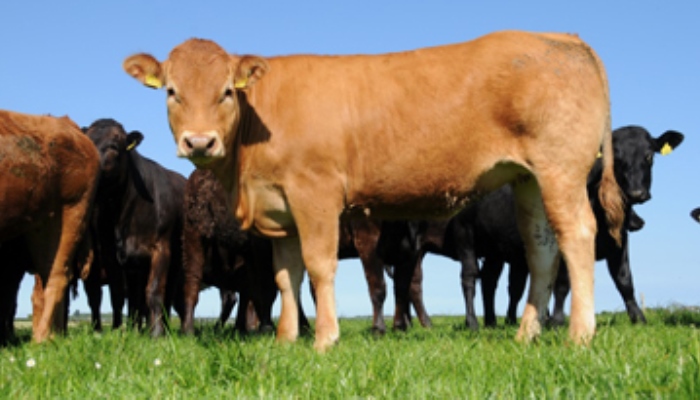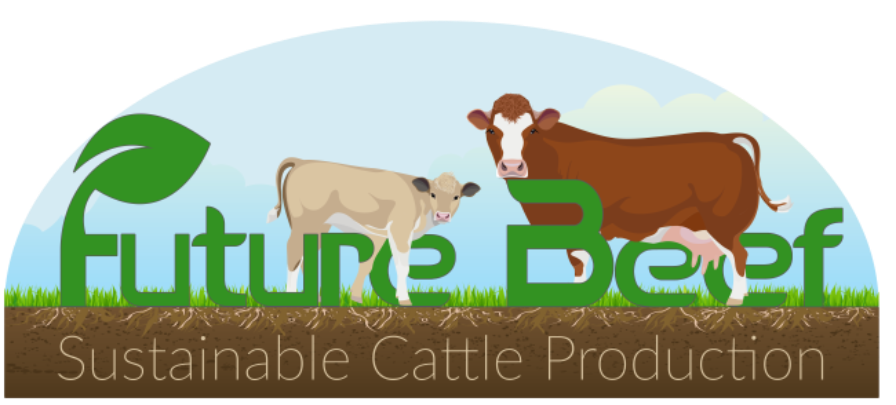06 June 2023
Managing through the dry spell on drystock farms – your questions answered

As parts of the country are now entering significant soil moisture deficits, the Teagasc Future Beef Programme has prepared a technical note which answers farmers’ questions on managing through the current dry spell.
Question 1: I’ve just cut first-cut silage and I want to grow a second cut silage crop on the same area. Should I spread with slurry now if there is no rain forecast for the next 10 days?
Grass growth is severely affected when soil moisture deficits go above 60mm. As we can see from Met Eireann information in the east of the country on the 1st of June, soil moisture deficits were ~59mm. We have had a very drying east wind along with high temperatures since, so this deficit is only building.
If your ground is very dry and you see no real growth, there is no point in spreading. The grass is unable to take it up on a very dry, sunny and windy day, like what we are getting in the east. You are spreading on bare ground, the nitrogen portion of the slurry can be easily lost through volatilisation, even when using a dribble bar / trailing shoe.
It also presents a possible risk of burning of re-emerging grass under very hot and dry conditions. If you are further west, where the soil moisture deficits are lower or have heavier ground with a grass cover and grass is still growing, you could spread watery slurry and spread in the cooler part of the evening preferably using a trailing shoe to capture the nitrogen. It is very likely with forecasted temperatures of >20oC and windy conditions, this will be very short term.
Figure 1: Soil moisture deficits on June 1 (Met Eireann)

Question 2: I’ve just cut silage and want to grow a second cut silage crop on the same area. Should I spread the full amount of chemical fertiliser now for the second cut silage crop if there is no rain forecast for the next 10 days?
In all cases, the answer here is no. However, there are a few scenarios. If you are in a green drought, the best place for your fertiliser is in the bag. It is not fertiliser that is limiting growth, it is moisture. In the most part, there is already fertiliser applied that has not been used up.
Also, with the soil temperatures where they are, there will be plenty of nitrogen mineralisation from the soil. When the rain does come, there will be enough nitrogen to kick off growth. Once you are sure of increased soil moisture, you can apply your fertiliser.
If 2018 thought us anything, it is you cannot depend on rain coming until it falls on your head. If you have heavier ground and you still have some grass growth, you could apply your compound fertiliser, e.g. two bags of 13-6-20. This will provide your phosphorous (P) and potassium (K) and some nitrogen. If rain does not come, you can graze this ground and not have wasted nitrogen. If rain does come in the next 14 days, you can top up with your nitrogen and you will have lost no time.
Question 3: I’ve just cut silage and I want to grow after grass for cattle to graze. No rain is forecast for the next 10 days, should I spread fertiliser of wait for rain?
This is the same as question one, as it is moisture that is affecting growth. If you are in the west or have heavier ground that is still not dried out, you could apply 20-23 units of nitrogen. A compound with potassium can be more effective with nitrogen uptake. Again, this window will be short lived looking at the forecast for temperatures >20oC and an east wind.
In the east or if you have little or no moisture, there is no point. It is better to wait for the rain to fall, the soil moisture to rise and then apply fertiliser. With soil temperatures so high, there is plenty of nitrogen mineralised to keep grass growing and to kick off growth after the rain does come. You can have the fertiliser purchased, in the yard and ready for when condition come right.
Question 4: If rain is coming after a very long dry spell should I plan to spread fertiliser (on silage and grazing area) before it rains or after it rains?
It would be better to wait until after it rains. Again, if 2018 thought us anything, it is you cannot depend on rain coming until it falls on your head. There will be enough nutrients in the soil to kick off growth. You can then apply chemical fertiliser once soil moisture levels have increased or to put it another way, when the soil moisture deficit goes back below 55-60mm.
Question 5: What about my rotation, should I stick to it?
With an average growth rate of 60kg DM/ha, a 23 day rotation is required to achieve a 1,400kg DM/ha pre-grazing cover (i.e. 1,400 / 60 = 23 days). However, as the dry weather continues, it is unlikely that a growth of 60kg DM/ha/day will be achieved going forward. If we look at the east at a current growth rate of 54 Kg DM/ha/day, a 25-26 day rotation is required (see table below). A lower pre-grazing cover may have to be accepted in some cases, but every effort must be made to try hold a 25 day rotation.
Table 1: Growth rates, rotation lengths and pre-grazing covers
|
Current growth rate (kg DM/ha/day) |
Rotation length needed (days) |
Target pre-grazing cover (kg DM/ha) |
|---|---|---|
| 80 | 18 | 1,400 |
| 60 | 23 | 1,400 |
| 55 | 24 | 1,300 |
| 50 | 25 | 1,200 |
| <50 | 30+ | <1,000-1,200 |
To try and keep at least a 1,200kg DM/ha pre-grazing cover, growth will have to stay at ~50kg DM/ha/day and the rotation length at 25 days (grazing 4% of the available grazing area per day, or 28% per week). If growth falls below 50kg/DM/ha, the rotation will have to be lengthened to 30 days.
Demand will have to equal or be lower than growth to maintain covers, the old adage of it takes grass to grow grass still applies, this may require supplementary feeding with hay/silage/concentrate. The introduction of supplementation should be done before grass supply on the farm declines to a serious extent. Below are some tips that can be used on farm to achieve your targets.
Key points:
- Rotation length must be maintained at 24-25 days approximately. Effectively this means grazing no more than 4% of the grazing area daily. On a 100ac farm, that’s 4ac/day;
- Keep in mind the dry matter of grass is high, so you will get longer out of paddocks.
- Graze down tight to 4cm, otherwise feed is being wasted;
- Assess the grass available on this area and if you are grazing more than 4% per day, you should supplement with forage/concentrate to balance herd demand;
- On a 100ac farm, for example, graze 4ac/day and 28ac/week. If you see you are grazing down to 4cm or less and exceeding the 4ac/day, you will need to supplement with silage, hay or concentrate;
- Reduce daily grass demand if necessary to below daily growth rates. This will help to hold grass cover on the farm, protecting current growth and speeding up recovery when rain arrives;
- Strip graze strong paddocks;
- Increasing rotation length beyond 30 days may lead to much reduced grass quality in current conditions (<50kg DM/ha/day grass growth).

